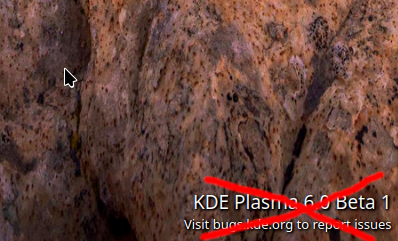Disappointing and poorly crafted ending. There are scenes from the trailer that doesn't include in the final game.
jlsalvador
For example, when someone ask for a command to list files, and another one reply with a command that removes everything.
TLDR; the reviewer is upset because the PSVR2-PC adapter doesn't come with a Display Port cable, and his Bluetooth adapter is not compatible. So he can't review the unit on time until he receive both items. 🤷
It's illegal in Europe to have an opt-out checked by default, must be an opt-in unchecked by default. This is one of the reason that Microsoft has always troubles in Europe about privacy and opt-out services.
Yes, using xrandr in the /etc/sddm.conf (https://man.archlinux.org/man/sddm.conf.5#DisplayCommand=) /usr/share/sddm/scripts/Xsetup.
Hahaha. Common problem with multiscreen with different resolutions. Your laptop screen is below and left of your main display, and X11 renders this black "virtual screen".
There are multiple solutions:
a) Set your screen resolution and position through KDE Plasma SystemSettings and push the button "apply to SDDM configuration" (I think Plasma 6.0 removed this option, try to find it in the SystemSettings KCM SDDM section).
b) The another solution is the old one. Create a file into /etc/X11/xorg.conf/display.conf with the proper values of position and resolution. Search in a wiki about examples (archlinux wiki?).
c) There is a third one that I used few years ago. SDDM allows you run any command after the screen initialization. So you can exec your xrand command here. Search about /etc/sddm.conf
Buddy, this message was posted 6 month ago, when this issue was a thing. Does not applied nowdays. But thank you for your help.
When you create a filesystem, there is a parameter named as "block percent free". This parameter should be "5%", so a 5% of your partition size can only be written by the "root" user.
You can decrease this value or just free some space. You can try to create files or folders as root as well.
I think that the reason is the same for "why is XMPP mentioned more than IRC?". IRC has more clients, it's less resources hungry and simpler than XMPP.
I think that the reason is because it is old-fashione, and it's clients feel outdated and (native) "lacking features" compared to more popular clients like Discord, WhatsApp, Messenger, Telegram or Signal. 🤷♂️
I can imagine my cousins using any of the clients I mentioned before, but not IRC, XMPP, or any protocol from my era. Life and traditions, isn't it?

TLDR; from MIT to GPL.